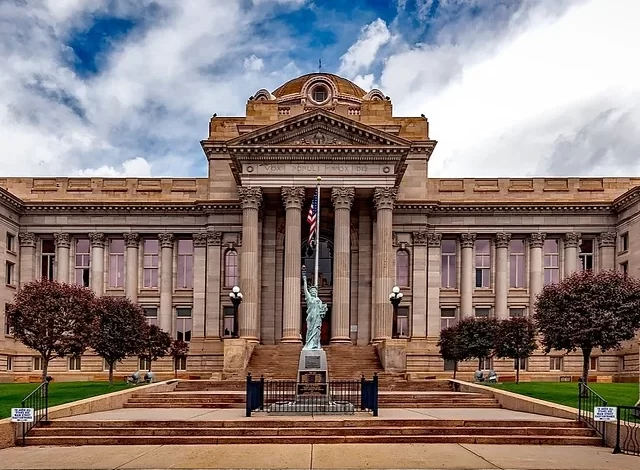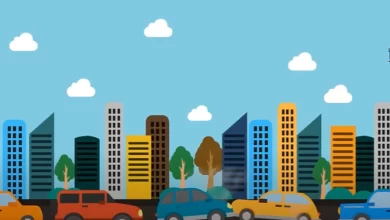
What you need to know about treehouse law dkoldies
Welcome to the enchanting world of treehouse law dkoldies! These whimsical structures perched high among the branches have captivated our imaginations for generations. From childhood dreams of secret hideouts to adult aspirations of eco-friendly living, treehouses hold a special allure that transcends age and resonates with our innate connection to nature.
In this blog post, we will explore everything you need to know about treehouses – from their different types and fascinating history, to the laws governing their construction and the benefits they offer as unique dwellings. So grab your imagination by the hand and let’s embark on a journey into the realm of treehouse law dkoldies!
What are treehouses?
Treehouses are magical structures that seem to defy gravity, as they hover among the treetops. They are often built using a combination of wood, ropes, and other materials, carefully intertwined with the natural branches of sturdy trees. Treehouses can vary in size and complexity – from small playhouses for children to larger multi-level dwellings equipped with all the comforts of home.
These arboreal abodes offer an escape from the hustle and bustle of daily life, providing a serene sanctuary where one can reconnect with nature. Whether used as a cozy retreat or an adventurous getaway, treehouses allow us to experience life amongst the leaves and birdsong.
What sets treehouses apart is their unique architecture. Unlike traditional houses firmly grounded on solid foundations, treehouses rely on the support of living trees to elevate them above ground level. This symbiotic relationship between structure and nature creates a harmonious blend that not only delights our senses but also minimizes environmental impact.
With their rustic charm and innate connection to nature, treehouses have become symbols of creativity and freedom. They evoke memories of childhood fantasies while simultaneously inspiring dreams for future adventures high above the ground.
So whether you envision a whimsical play space suspended amidst foliage or an eco-friendly dwelling nestled within Mother Nature’s embrace, treehouses offer endless possibilities limited only by your imagination!
The different types of treehouses
When it comes to treehouses, there is an endless array of possibilities. From small and simple structures nestled among the branches to elaborate multi-level masterpieces, treehouses come in all shapes and sizes. Some are designed purely for play and imagination, while others serve as cozy retreats or even full-time residences.
One type of treehouse is the classic platform style, which consists of a single level built around the trunk of a sturdy tree. These types of treehouses are often used by children as hideouts or play spaces. Another popular design is the suspended treehouse, which hangs from sturdy ropes or cables attached to multiple trees. These floating structures can sway with the breeze, giving occupants a unique experience.
For those seeking something more luxurious, there are high-end treehouses equipped with modern amenities such as electricity and plumbing. These extravagant dwellings often feature multiple levels connected by bridges or spiral staircases. They provide a unique blend of nature and comfort that appeals to both adventure seekers and those looking for a peaceful escape.
No matter what type of treehouse you choose, building one requires careful planning and consideration. Factors such as location, support systems, materials, and safety measures must all be taken into account to ensure a structurally sound and durable structure.
In conclusion (not applicable here), each type of treehouse offers its own charm and appeal. Whether you’re looking for a whimsical play space for your children or dreaming of living amongst the treetops yourself, there’s sure to be a perfect type of treehouse out there waiting for you!
The history of treehouses
The history of treehouses is a fascinating journey through time, showcasing the ingenuity and creativity of humans. From ancient civilizations to modern times, people have been drawn to the idea of building elevated structures in trees.
In ancient times, treehouses were used for practical purposes such as protection from wild animals or flooding. Native tribes in various parts of the world utilized them as lookout points or as shelters during hunting expeditions. These early forms of treehouses were simple platforms constructed using natural materials like branches and leaves.
As society advanced, so did our ability to construct more elaborate and intricate treehouses. In medieval Europe, nobles built extravagant treehouse retreats on their estates. These luxurious structures served as private sanctuaries where they could enjoy nature while being elevated above commoners.
Fast forward to the present day, and we see a resurgence in the popularity of treehouses. Modern technology has allowed for even greater innovation in design and construction techniques. Architects and designers now create stunning eco-friendly treetop retreats that blend seamlessly with their natural surroundings.
Treehouses have evolved from basic shelters into architectural wonders that push boundaries. They serve not only as unique living spaces but also as eco-tourism destinations and creative outlets for those seeking an escape from urban life.
The history of treehouses reflects our innate desire to connect with nature and embrace a simpler way of living. Whether it’s for practical reasons or pure enjoyment, these elevated dwellings continue to captivate our imagination and inspire us to explore new heights – both literally and metaphorically
How to build a treehouse
Building a treehouse is an exciting project that allows you to create your own magical hideaway in the treetops. Whether you’re building it for yourself, your children, or just as a fun DIY challenge, here are some steps to guide you through the process.
First and foremost, choose the right tree. Look for a healthy, sturdy tree with strong branches that can support the weight of your treehouse. It’s important to consider factors like wind exposure and proximity to power lines as well.
Next, create a solid foundation. This can be done by constructing a platform using beams or attaching brackets directly onto the trunk of the tree. Make sure everything is level and secure before moving on.
Once you have your foundation in place, it’s time to start framing the walls and roof structure. Use treated lumber for durability and weather resistance. Don’t forget to leave openings for windows and doors!
When it comes to finishing touches, let your creativity soar! Add siding or paint to match your style preferences. Install windows that allow natural light inside while providing great views of nature outside.
Don’t forget about safety features like handrails or protective barriers around elevated areas.
Remember that building codes may vary depending on where you live so familiarize yourself with local regulations before starting construction.
With careful planning and attention to detail, anyone can build their dream treehouse – a cozy retreat nestled among nature’s canopy! Happy building!
Treehouse laws
Treehouse laws are regulations that govern the construction and use of treehouses. These laws vary from country to country, and even within different regions or municipalities. While some places have specific guidelines for building treehouses, others may classify them under existing building codes or zoning regulations.
One common requirement in many jurisdictions is obtaining a permit before constructing a treehouse. This ensures that the structure meets safety standards and does not pose any risks to occupants or nearby properties. Permits may involve submitting plans, demonstrating compliance with local ordinances, and paying associated fees.
Another aspect of treehouse laws relates to property rights and land use. In some areas, trees are considered part of the natural environment and therefore protected by environmental regulations. As such, cutting down certain types of trees or altering their structures without proper authorization can be illegal.
Additionally, there may be restrictions on using treehouses as permanent residences or for commercial purposes. Some areas only allow treehouses for recreational use or as temporary structures. Violating these usage restrictions could result in penalties or legal consequences.
It’s important to note that enforcement of treehouse laws varies widely depending on location and circumstances. While some communities actively monitor compliance with regulations, others may prioritize other issues over minor infractions related to treehouses.
If you’re planning to build a treehouse or already have one on your property, it’s wise to familiarize yourself with the specific rules applicable in your area. Consulting with local authorities or seeking legal advice can help ensure you stay within the bounds of the law while enjoying your unique treetop dwelling.
Remember: understanding and adhering to relevant treehouse laws not only protects you legally but also promotes responsible construction practices that prioritize safety and environmental conservation
The benefits of living in a treehouse
Living in a treehouse offers a unique and magical experience that few other homes can provide. It allows you to reconnect with nature, escape the hustle and bustle of city life, and immerse yourself in the beauty of the natural world. The benefits of living in a treehouse are numerous.
One of the greatest advantages is the sense of tranquility and peacefulness that comes from being surrounded by trees. Waking up to the sound of birds chirping and leaves rustling in the wind is truly soothing for both mind and soul. The views from a treehouse are also unparalleled – imagine looking out your window at breathtaking sunsets or star-filled skies.
Living in a treehouse promotes sustainability as well. By utilizing existing trees as support structures, you minimize your impact on the environment compared to traditional housing construction methods. Additionally, many people who live in treehouses adopt eco-friendly practices such as rainwater harvesting, composting toilets, and solar power systems.
Treehouses foster creativity and imagination. Whether it’s designing an intricate rope bridge or building secret hideaways within its walls, there is endless potential for imaginative play and exploration. Children especially benefit from this type of living arrangement as it encourages outdoor activities, physical exercise, and enhances their problem-solving skills.
Living in a treehouse builds resilience by challenging our comfort zones. Treehouses require some level of adaptability – weather conditions change rapidly at elevated heights; maintenance tasks may be more involved than those for conventional houses; privacy could be compromised due to open-air designs. Overcoming these challenges instills flexibility and resourcefulness while fostering self-reliance.
In conclusion,
the benefits of living in a treehouse extend far beyond just having an unconventional home.
They offer reconnectivity with nature,
provide tranquility,
promote sustainability,
encourage creativity,
and build resilience.
So if you’re seeking an extraordinary lifestyle immersed
in nature’s embrace,
consider making your dream come true by living in a treehouse.
Conclusion
Conclusion
Treehouses are not just childhood fantasies or whimsical structures. They have evolved into unique living spaces that offer a connection with nature and a sense of adventure. However, before embarking on building your own treehouse, it is crucial to understand the laws and regulations surrounding these structures.
Treehouse law dkoldies varies from country to country and even from state to state. It’s essential to research and familiarize yourself with local building codes, permits, and environmental considerations. Consulting with professionals such as arborists or architects can provide valuable guidance throughout the process.
Building a treehouse requires careful planning, including selecting an appropriate tree for support and ensuring structural stability. Safety measures should be prioritized at all times during construction. Following best practices will ensure that your treehouse is secure and enjoyable for years to come.
Living in a treehouse offers numerous benefits beyond the enchanting experience itself. The proximity to nature promotes relaxation, creativity, and overall well-being. Treehouses allow us to disconnect from our hectic lives while reconnecting with the natural world around us.
Whether you choose to build a simple play structure for children or create an elaborate dwelling high above the ground—treehouses offer endless possibilities for imagination and enjoyment.
So go ahead! Embrace your inner child, unleash your creativity, but always remember to abide by the rules of treehouse law dkoldies when constructing these extraordinary abodes among trees.
Now it’s time for you to embark on this exciting journey – build your dreamy escape nestled amidst branches! Happy building!







